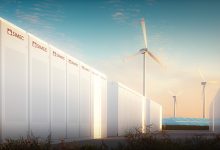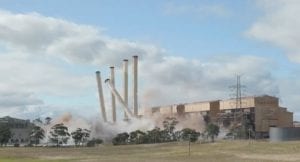Summary
The seasonality of supply is a big deal, and requires very long duration storage. Our modelling of South Australia shows that 4-10 hour storage supplied by batteries and/or pumped hydro was often full during excess wind and solar periods, and equally was often empty during periods of excess demand. This led to a need for gas or its equivalent to ensure there was no unserved energy demand.
An extremely crude estimate of the firming cost was around $12/MWh and the majority of that cost was the gas capital and operating costs. We note the gas generation capacity already exists.
Gas ended up supplying 7.5% of the energy and so South Australia would have been very low carbon emissions in this scenario. Overall the results suggest that even with the benefit of exports and imports it’s likely some long duration storage will be required NEM wide as VRE penetration increases. However, much more work remains to be done in studying storage duration requirements before we at ITK really know what we are talking about.
The seasonality of wind and solar is a big deal
Recently, ITK looked at the excellent prospects for batteries and the increasing amount of evidence that utility scale batteries are finding a place in the market.
We noted that in the US, where, somehow, ancilliary services and frequency control don’t seem to be the issues that they are in Australia, batteries were starting to be of longer duration. Many of the 2GW of the battery contacts signed by leading US utility NextEra Energy are for four hour duration.
In Australia though, all the grid scale batteries are of 2 hours or less duration.

We’ve ignored a couple of smaller Queensland based batteries, even though Lakeland actually does have around 4 hours storage.
The Australian total committed to date of just over 500 MW is a meaningful amount of power. Average NEM wide demand over the past 12 months is a shade over 21GW, so batteries will be capable of delivering 2.5% of power by 2023 and most of us will be amazed if there aren’t more batteries by then.
The most prominent value case for these batteries is contingency frequency control and for that purpose very little duration is needed, as most contingency events last only a few minutes.
ITK boldly predicts that batteries and grid forming inverters will end up being the bedrock of the NEM control system as their overwhelming advantage in frequency control and the “smoothness” of battery current simply can’t be beat.
But for the main task of providing energy storage ……… read on with the caveat that this note is looking at things from the point of view of minimising unserved energy at lowest cost.
It is not looking at the prospects of an individual battery or pumped hydro operator. They might and probably would have a quite different set of factors.
The mismatch between variable renewable energy and demand is significant and will grow
Our previous article on “Let’s talk about batteries” looked at grossing up existing wind and solar output in South Australia in the 1 September 2019- 24 May 2020 time frame.
The time period is arbitrary but chosen because it is recent and because there is 61% VRE (variable renewable energy) in South Australia, so it’s the closest thing to the future we have here in Australia.
Repeating the relevant part of that note:
We start by showing VRE compared to demand on an hourly average. VRE is 61% of demand in this period and the period included when South Aust was islanded and supplying the Portland aluminium smelter. And that smelter, in that brief period, operated without a hitch.
Neither were there any show-stopping inertia events during the period. Not shown in the figure below are imports and exports of electricity, or the contribution from gas.

Another important point is that South Australia’s average demand peaking at around 1.6GW is relatively small and small samples of most things can be expected to be more volatile than large samples.
So our analysis in South Australia is likely to overstate the NEM wide issue.
So with that background what we did is grow VRE supply by 5/9 = 55% so that total VRE output is equal to total demand.
This produces periods of surplus VRE and shortage. On a daily average.

I then talked about duration “runs” but several readers commented privately to me that they felt that part of the note was lacking. And it was.
It turns out that South Australia during this time period provides a great storage duration case study. And yet another reminder that there is always a lot to learn. A lot.
In South Australia, VRE and demand are very seasonal
To start with we simply accumulated the surplus of demand over VRE for the approximately 8 months of half hourly data. That is for every sequential half hour we took the difference between demand and VRE (positive if demand exceeded VRE and negative if VRE > demand).
We then added that to the difference in the previous half hour and so on for 12,860 half hours.
The resulting graph resembles a dam emptying out in the dryer months and then refilling itself.
In the chart a negative number represents an accumulated surplus of VRE over demand and the chart shows that surplus building up during the September Quarter and then gradually being depleted during Summer to end up square.
And recall that VRE produced has been designed to equal total demand over the period.

It’s more or less this kind of pattern that Snowy says it aims to exploit, not just in South Australia but round the NEM. I know there are many arguments about Snowy but a graph like this supports Gordon Wymer’s basic point that Snowy is designed for seasonal use because there is a need for seasonal storage and storage charging.
Next I looked at the shortfall and surplus runs but instead of just looking at the consecutive half hours I also calculated the amount of the surplus or deficit of each run.
So for instance a subset of the results is:

So to spell it out a bit more, the table shows, for instance, that there were 12 occasions during the sample period when demand exceeded VRE production for exactly 2 consecutive half hours.
The final column shows that the accumulated deficit of all those 2 half hourly intervals was 841 MWh, the average deficit was 70 MWh.
The MW columns show the average power required for each of those two half hours, in this case again 70 MW. Virtually all of the deficit runs were less than 45 half hours although there was an exception at over 180 half hours. Equally, most of the surplus runs were also less than 45 half hours. So this produced a total 90 sets of runs.
I then graphed the average power requirement of a run against the length of a run. I didn’t expect to find a relationship but this is what turned up.

Thinking about it, my new working hypothesis is that the positive correlation between the length of shortfall and the amount of power required is related to the wind gradually becoming calm in the evenings.
When there is a small short fall it could reflect just a temporary lull in wind, or rain, or cloud. When the wind falls right away it then tends to stay at a low level and then gradually pick up.
This effect will be particularly noticeable when it occurs at night and there is no solar to offset the shortfall. The same goes in reverse for a surplus.
Someone else might have a better explanation (assuming the calculations are correct, never a given in my case).
So for instance there was exactly four runs of 33 half hours where demand continuously exceed supply. One of those was in May, 2020, and the average short fall during that run was 313 MW

Looking at the ungrossed up original data makes the wind drop off more obvious.

Filling the gap
The next step, is to fill the gap with storage. This was the real eye opener.
As a start we can look at the maximum power in MW required and the figure below sorts the 12,817 half hours from maximum surplus VRE over demand to maximum shortfall.
The figures shows that about 98% of the time 1500 MW is enough.
For this amateur exercise lets assume the other 2 % of the half hours are done by gym junkies pedalling bicycles.
In fact though the absolute maximimum required was over 2500 MW

Reverting back to Fig 4 the challenge is obvious. In the first half of the sample period VRE is mostly exceeding demand, so whatever storage you have is going to fill up (pumped hydro) or be charged (battery) and then what do you do? In our closed system, there is no exports.
Equally, in the second half of the year there is an offsetting net surplus of demand over VRE production with the result that there are less opportunities to charge than provide power.
We also know that shorter duration storage requires less power. So we start by adding in 500 MW/ 4 hour batteries.
Again, keeping it simple, we make these 100% efficient and we start our analysis with them fully discharged.
In fact 4 hour batteries made next to no difference to the cumulative energy surplus and short fall even though their capacity utilization (measured as 1 complete cycle per day every day represents 100% capacity) is around 60%.
Then, after the batteries were fully charged, we introduced 500 MW of pumped hydro with 10 hours duration.
This made a difference but the strongly seasonal nature of the VRE resource meant that even 10 hour storage was nowhere near enough, even with the batteries, even when fully charged, to prevent times when demand exceeded all available supply.
We then assumed enough gas capacity to meet any additional power. It turned out that about 2.5 GW of gas power was needed, however we truncated gas at 1500 MW which covered 99.75% of the remaining shortfall leaving the last 139 half hours to the gym junkie bicycle pedallers.
Another problem we ignored in this analysis is the spilled energy of about 1.4 TWh or 7% of production.
In this first trial the results can be summarised as:

The capex numbers are just some rule of thumb numbers ITK carries around.
You can see that pumped hydro capacity use is too low and the same could be said for batteries. You can also see that even without fuel costs, gas represents nearly half the capital cost. Gas ends up supplying 1.38 TWh or about 7.5% of demand.
It’s really beyond the scope of this note to do an optimization and in any case it’s pretty pointless because there is no point optimizing South Australia on its own for one 9 month period.
Nevertheless one starting point is to reduce the duration of the batteries to say 1 hour.
Alternatively depending on costs you could increase battery duration to 10 hours and get rid of the pumped hydro.
But let’s reduce battery duration. In this model in this time period that results in reduced unserved energy, improves capacity utilization of all assets and lowers the total capital coast by $0.5 billion at the expense of a small increase in gas operating cost and carbon emissions.

Obviously, way more optimization could be done. Finally, in this particular example we can make a very, very crude estimate of the firming cost in $/MWh.
To do that we assume all the firming assets including the battery last for 20 years and that the gas operating cost is a constant $80/MWh.
Assuming no logical or arithmetic mistakes ( a very big if for this analyst) we end up with a lifetime firming cost about $12/MWh.

Immediately we can see gas is nearly 80% of the total cost and this suggests much more optimization may be possible by increasing the duration of pumped hydro, subject to the issues discussed above of seasonality restricting opportunity.
Still, this exercise wasn’t originally designed to develop an optimied system. Instead it was just an early look into duration issues.
There is more to be said for sure, but that’s enough for one contribution to the cognitive surplus.








